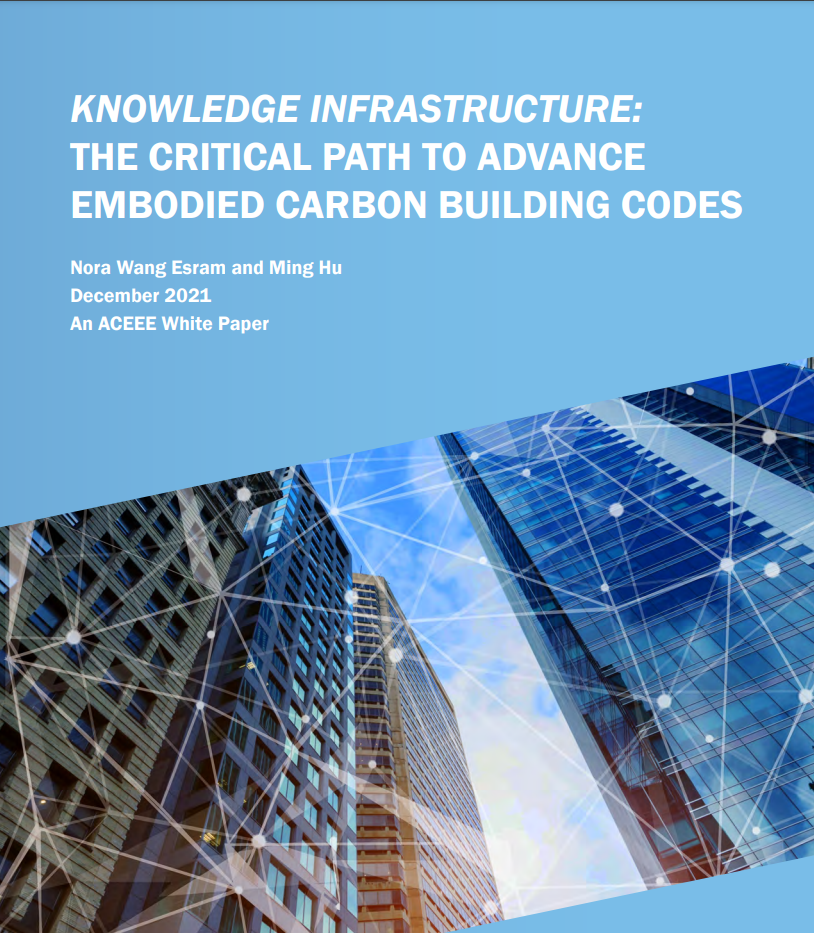ACEEE White Paper (December 2021)
Authors Nora Esram and Ming Hu screened over 5,000 published articles, and reviewed 44 articles in extensive detail to identify the current state of knowledge for existing methods, databases, and tools on embodied carbon in buildings. Their research resulted in the following key findings:
- There are well-established international standards to guide the development of methodologies to assess embodied carbon in the built environment, but these standards focus on principles and frameworks. Implementation guides for buildings in Northern America are needed for issues such as how to choose system boundaries and how to utilize multiple methods to overcome the challenge of upstream data complexity.
- Existing data are primarily at the material level and focus on the manufacturing process. To enable a more complete life-cycle analysis, data on transportation, construction, and building use are needed. Data collection and reporting guidelines are also needed for supply-chain-specific and facility-specific data to enable more accurate counting and fair comparisons.
- A great number of tools are available to facilitate embodied carbon analysis; however, their underlying databases could lead to great discrepancies in results. Guidelines for data standardization and transparency are needed.
- In the United States, the largest knowledge gap concerning embodied carbon in buildings exists at the whole-building level. The lack of publicly accessible building-level data and of guidelines to establish reference cases are obstacles to reaching consensus on how to baseline or benchmark the life-cycle embodied carbon of a building. Better data and consensus are both needed.
- The trade-offs between operational carbon (from building energy use) and embodied carbon should be considered in whole-building embodied carbon evaluations. The lack of information on product durability may also introduce conflicts between resilience and embodied carbon. These are all critical components that must be addressed.
- Development of guidelines and standards on whole-life embodied carbon data collection and reporting will require participation from manufacturers, construction companies, and building owners. Developing and enhancing their capability to collect and report data should be considered when demanding more data from these stakeholders.
- Developing business cases for manufacturers and integrating building decarbonization with industrial decarbonization are essential steps to build the knowledge infrastructure needed to reduce embodied carbon in buildings.
